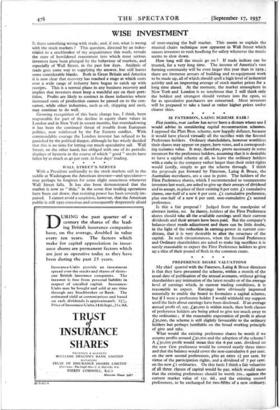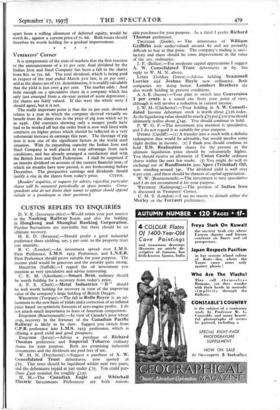PREFERENCE SHARE VALUATIONS
My chief quarrel with the Paterson, Laing & Bruce directors is that they have presented the scheme, within a month of the usual date of publication of the annual accounts, without giving shareholders any intimation of the latest results or of the average level of earnings which, in current trading conditions, it is reasonable to expect. Earnings have obviously improved materially to enable the board to formulate a capital scheme, but if I were a preference holder I would withhold my support untilthe facts about earnings have been disclosed. If an average annual profit of, say, Lito,000 is within reach, then both classes of preference holders are being asked to give too much away to the ordinaries ; if the reasonable expectation of profit is about E30,000, the scheme is still slightly favourable to the ordinary holders but perhaps justifiable on the broad working principle of give and take.
What would the existing preference shares be worth if we assume profits around k3o,00o and the adoption of the scheme? A £3o,00o profit would mean that the 6 pet cent. dividend on the new first preference would be covered nearly three times and that the balance would cover the non-cumulative 6 per cent. on the new second preferences, plus an extra if per cent. by virtue of the participation rights, and a dividend of 7 per cent. on the new £1 ordinaries. On this basis I think a fair valuation of all three classes of capital would be par, which would mean that the existing preferences should be worth 20S., against the current market value of 15s. 6d., and the existing second preferences, to be exchanged for two-fifths of a new ordinary, apart from a trifling allotment of deferred equity, would -be worth 8s., against a current price of 7s. 6d. Both issues should therefore be worth holding for a gradual improvement. .











































 Previous page
Previous page